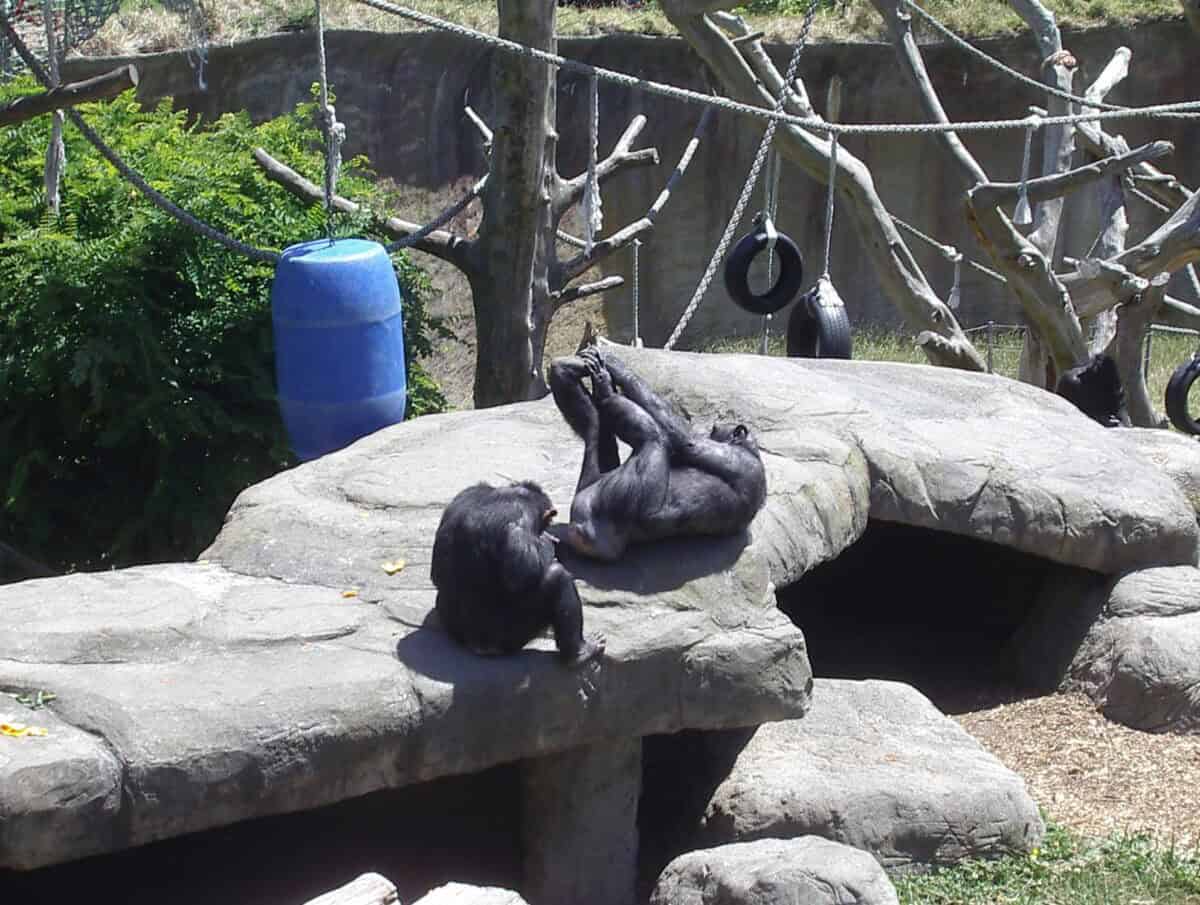Chimpanzees, our closest living relatives, continually surprise scientists with their advanced behaviors. One aspect capturing significant attention is their adept use of tools, a trait once thought to be uniquely human. However, recent studies have unveiled astonishing discoveries about these primates’ tool-using capabilities, challenging our understanding of animal intelligence.
The Evolution of Tool Use in Chimpanzees

Chimpanzees have long been observed using tools, a behavior that provides crucial insights into the evolution of human intelligence. By studying their tool use, scientists gain a glimpse into our own ancestral past, offering clues about how early humans may have utilized similar strategies for survival and adaptation.
Chimpanzees’ Toolbox: An Overview

Chimpanzees have a wide array of tools in their repertoire. From using twigs to fish termites out of mounds to employing stones to crack open nuts, these primates demonstrate remarkable ingenuity. These skills highlight their problem-solving abilities, which are essential for accessing food resources in their natural habitats.
The Role of Learning and Social Transmission

Tool use in chimpanzees is not solely a product of instinct; it involves learning and social transmission. Young chimps learn from observing older, experienced individuals, which speaks to a cultural aspect of tool use. This transmission of knowledge parallels how human cultures develop and pass down skills through generations.
Innovative Tool Use That Challenges Expectations

While many tools used by chimpanzees are well-documented, researchers recently observed something unexpected: chimpanzees creating complex tools that involve multiple components. This suggests a higher level of cognitive processing, challenging the traditional boundaries that distinguished human intelligence from that of other species.
Material Selection: Not All Sticks Are Equal

Chimpanzees display discernment in selecting materials for their tools. Studies have shown that they choose specific types of wood or stone that best suit the task at hand, indicating an understanding of material properties and the foresight to anticipate tool functionality.
Environmental Factors Influencing Tool Use

Tool use among chimpanzees often varies depending on their environment. For instance, chimpanzees living in forested regions might use tools differently compared to those in savannah-like settings. These variations underscore the adaptability of chimpanzees to their surroundings.
Comparative Analysis with Other Primates

While chimpanzees are among the most proficient tool users in the animal kingdom, they are not alone. Other primates, like capuchin monkeys and orangutans, also demonstrate the ability to use tools. Comparing these species helps researchers understand the evolutionary pressures that shaped tool use.
The Implications for Conservation Efforts

Understanding chimpanzees’ cognitive abilities and their cultural practices is vital for conservation efforts. Preserving their natural habitats ensures that these intelligent beings can continue to thrive and exhibit their natural behaviors, which are integral to their survival and well-being.
Ethical Considerations in Chimpanzee Research

Research involving chimpanzees raises ethical questions, especially concerning their treatment in captivity. It is imperative that researchers and conservationists prioritize humane, ethical handling of these intelligent creatures, respecting their autonomy and social structures.
The Discovery That Stunned Researchers

One groundbreaking discovery that left researchers stunned was the observation of a chimpanzee fashioning a spear-like tool, intended for hunting. This ability to use tools for hunting marks a significant cognitive leap and suggests that chimpanzees might understand and innovate more than previously believed.
Future Research Directions

The continual study of chimpanzees’ tool use opens up countless avenues for future research. Scientists aim to delve deeper into understanding the cognitive and environmental factors that drive tool innovation, which may unlock further secrets about the primate mind.
Conclusion: Redefining Our Understanding of Intelligence

Chimpanzees’ tool use provides a fascinating window into the cognitive capabilities of non-human animals. These findings not only enrich our understanding of these primates but also inspire a reevaluation of what it means to be intelligent. As we continue to learn more from our primate cousins, we are reminded of the shared history between humans and chimpanzees, bridging the gap between species and expanding our appreciation of animal intelligence.
- This Bird Migrates 12,000 Miles Without Landing Once - August 18, 2025
- The World’s Dumbest Animals You Won’t Believe How Silly They Are - August 18, 2025
- Do Animals Dream? What Research Reveals - August 18, 2025

